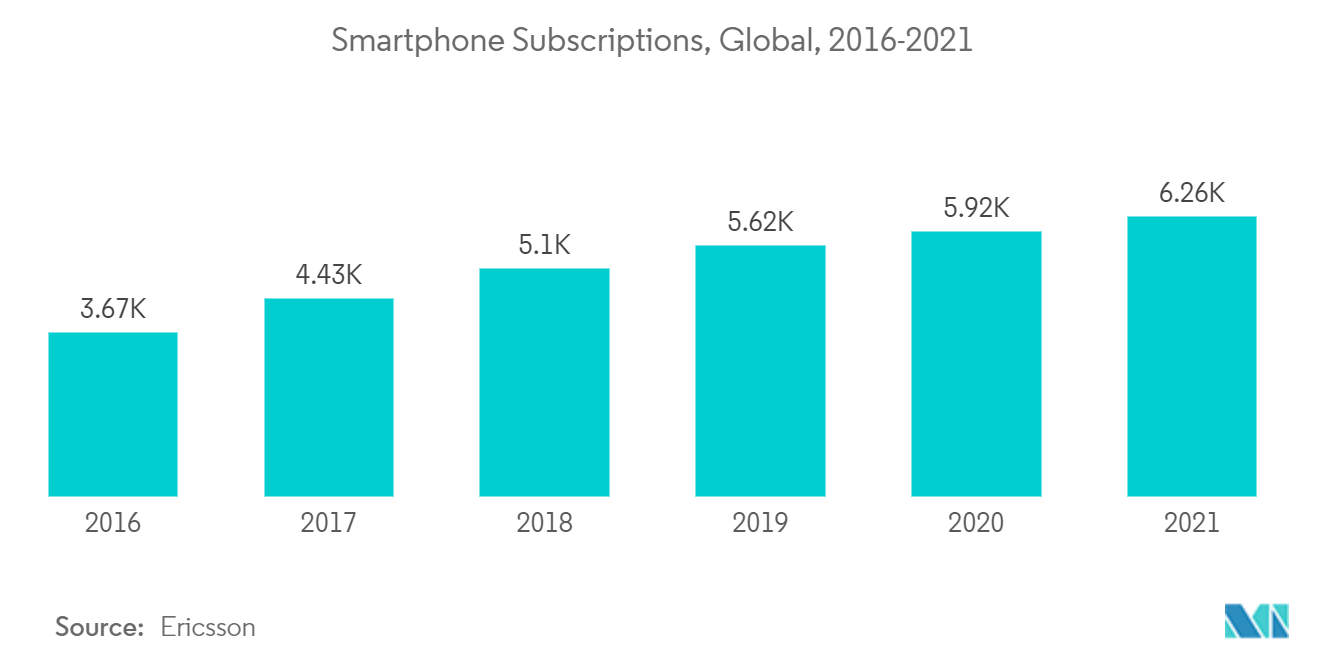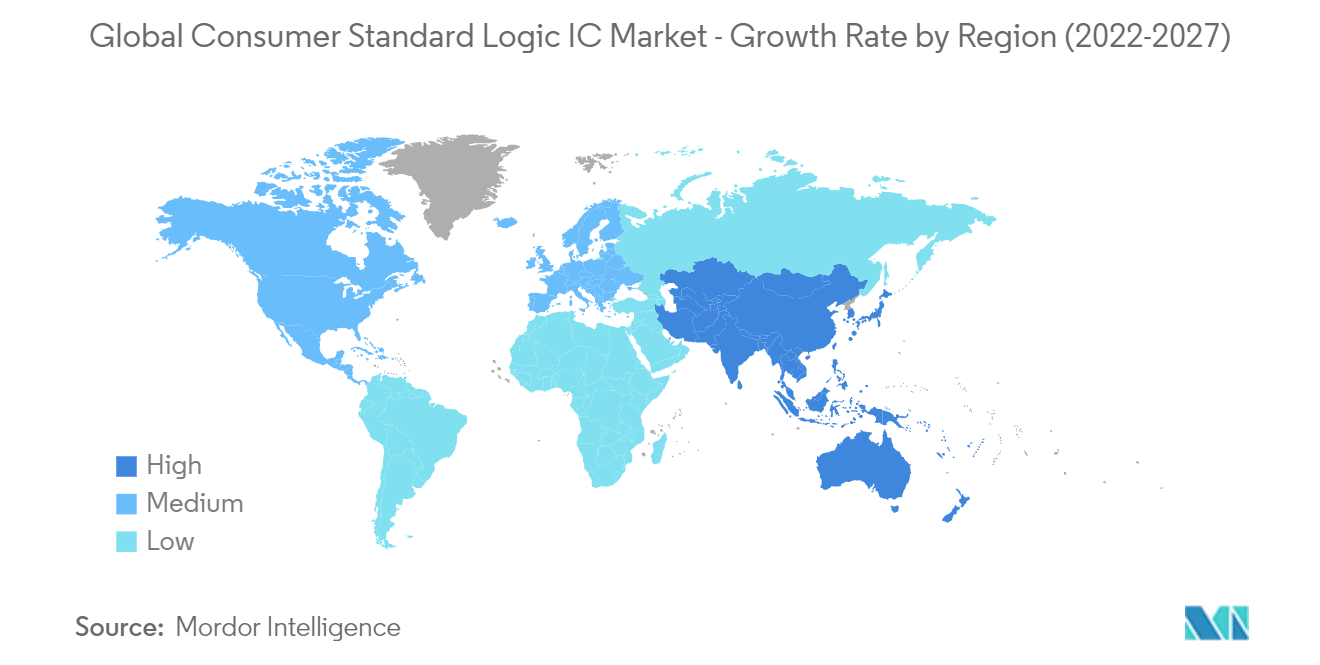Market Trends of Global Consumer Standard Logic IC Industry
This section covers the major market trends shaping the Consumer Standard Logic IC Market according to our research experts:
Steady Increase in Demand for Consumer Electronics
- With the ecosystem of connected devices flourishing, the application of logic ICs in smartphones is projected to boost the adoption rate. The United States is one of the major countries in the region, driving the adoption of connected devices and supporting the adoption of the technology.
- For instance, according to the Consumer Technology Association (CTA) and the US Census Bureau, the sales value of smartphones sold in the United States is forecasted to increase from USD 73 billion in 2021 to USD 74.7 billion in 2022.
- The increasing demand for smartphones, laptops, and tablets, and internet penetration across the world owing to the adoption of work-from-home and learn-from-home culture during the COVID-19 pandemic has further led to demand for advanced semiconductor components.
- Further, the advent of 5G has led to significant demand for 5G-enabled mobile phones worldwide. For instance, according to the most recent figures given by the Chinese government, Chinese subscribers are flocking to buy pricey new 5G cellphones. China's 5G phone shipments surpassed 266 million units in 2021, an increase of 63.5 % over the previous year. 5G accounted for 75.9% of total mobile phone shipments, according to data from the China Academy of Information and Communications Technology (CAICT).
- Thus, the growing demand for mobile phones is anticipated to drive the demand for advanced chips such as standard logic ICs during the forecast period.

Asia-Pacific is Expected to Register a Significant Market Share During the Forecast Period
- Asia-Pacific is anticipated to hold a substantial market share during the forecast period. Significant demand for smartphones from countries such as India, China, Japan, and South Korea, are encouraging many vendors to set up production facilities in the region. The availability of raw materials along with low establishment and labor costs have also motivated companies to establish their production centers in the region. Along with manufacturing benefits, the strong demand and rapid growth are also influencing mobile phone companies to set up their production facilities in the Asia-Pacific region.
- Vivo, a Chinese smartphone manufacturer, is expanding its base in India and plans to start exporting 'Made-in-India' hardware in 2022. Vivo plans to boost yearly production capacity from 50 million devices to 60 million units this year, with the goal of scaling the manufacturing capacity further to 120 million units annually in India. Currently, cellphones made in India are meeting 100 % of the company's local demand. Vivo intends to complete Rs 3,500 crore of the Rs 7,500 crore manufacturing investment plan by 2023 in order to grow up its production capabilities. This increase in production capacity for export-related purposes will certainly drive the demand for all types of advanced ICs for mobile phones in the region.
- Moreover, during shifting supply chains and macroeconomic policy, the government of China is spending aggressively on semiconductor investment, acquisition, and talent recruitment to uplift the industry by on-shoring chip manufacturing equal to those of the top global foundries.
- With 28 additional fab construction projects totaling USD 26 billion in new planned funding announced in 2021, China continues to expand its semiconductor manufacturing supply chain. SMIC and other Chinese semiconductor giants have increased their collaborations with local governments to build more joint venture fabs, focusing on mature technology nodes. Wafer manufacturing startups are flourishing in the cutting-edge fabrication area, thanks to government incentives.
- Furthermore, in order to achieve self-sufficiency, India's government has announced industry-friendly initiatives for the development of the country's semiconductor and display manufacturing ecosystem. For instance, in December 2021, the Union Cabinet approved an INR 76,000 crore budget for India's semiconductor manufacturing ecosystem, with incentives announced for electronic components, sub-assemblies, and finished items. The policy will support silicon semiconductor fabs, display labs, compound semiconductors/ silicon photonics/ sensors fabs, semiconductor packaging, semiconductor design, and modernization and commercialization of the Semiconductor Laboratory (SCL) at Mohali under the scheme for holistic development of the semiconductor and display manufacturing system.


